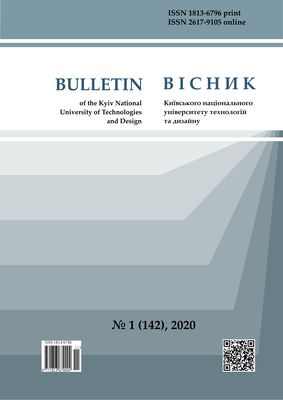RESEARCH OF THE PASSAGE OF ULTRASONIC WAVES THROUGH A TWO-LAYERED MATERIAL WITH COMPLEX STRUCTURE AT THE CONTROL OF ITS TECHNOLOGICAL PARAMETERS
DOI:
https://doi.org/10.30857/1813-6796.2020.1.5Keywords:
two-layer material, pores, ultrasonic waves, attenuation, amplitude ratios of waves, technological parameters, contactless controlAbstract
Investigate the passage of ultrasonic waves through a two-layer material with a complex structure with non-contact control of its technological parameters. A non-contact ultrasonic method was used in the work to control technological parameters of materials with a complex structure, which takes into account the attenuation of ultrasonic waves. It is substantiated that the attenuation of an ultrasonic signal for a material with significant pores during its transverse sounding can be neglected compared to attenuation in a material without through pores. The results of studies of the influence of the thickness of a material with pores on the amplitude ratios of ultrasonic waves are presented. The dependences of the amplitudes of ultrasonic waves are obtained, one of which passes through a two-layer continuous material, and the other passes through a two-layer material with pores, taking into account the dependence of their attenuation on the thickness of the material. In this work, we obtained the dependences of the phase shift of ultrasonic waves, which were reflected from a two-layer material without pores, and waves reflected from a two-layer material with pores, on the total thickness of the controlled material, if we compare the phase of these waves with incident vibrations. Also obtained are the dependences of the change in wave amplitudes over time for a pulsed ultrasonic signal passing through a controlled material. It is proposed to use a pulsed ultrasonic signal for operational non-contact control of technological parameters of bilayer materials with a complex structure. The analysis showed that the obtained expressions for pulsed ultrasonic signals that can interact with porous materials can be used to create new methods and means of non-destructive non-contact control of technological parameters of materials with a complex structure. The aforementioned will make it possible to create complex integrated and universal contactless control devices for various technological parameters for composite materials with pores, which today are subjected only to destructive contact control, which does not allow operational monitoring directly at the plant.

